Another Schubert portrait turns up
Posted by Richard on UTC 2019-10-17 07:19
Our reader Luca de Ieso emailed us the other day apropos our discussions of the pictorial representations of Schubert that a 'portrait of Schubert' had been sold by a US auction house in May of last year. The portrait was stated to be the work of the little-known Belgian painter, Josef Bartholomeus Vieillevoye (1788-1855) in 1831. Here it is:
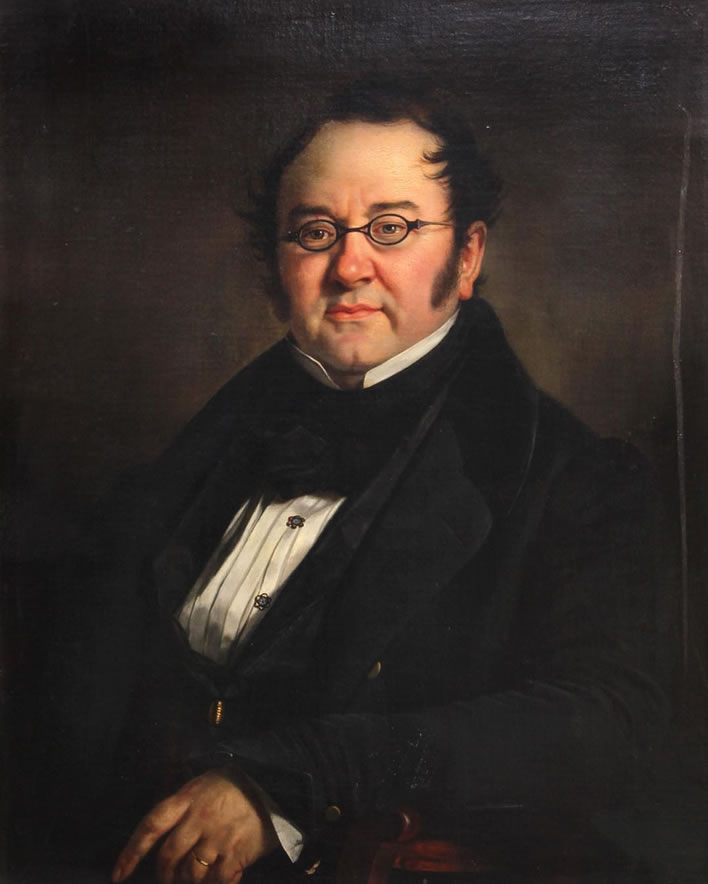
All the various images of this portrait in this article come from the online catalogues of either Clars Auction Gallery or Michaan's Auctions. [Click on the image to open a larger version in a new browser tab.]
That Belgian thing
As soon as anyone mentions 'Belgian' or 'Belgium' in a historical context the pedant's ears prick up, for – of course – the entity 'Belgium' did not exist before 1830. The section of the European tapestry which we today lightly call Belgium is, in fact, a little tapestry in its own right that can only be unpicked by the specialist.
Fortunately, we don't need to do that – we merely need to note that Vieillevoye was born in Verviers, a town in what is now the French-speaking Wallonia region, and died in Liège, a city in the same region. Verviers had been annexed by the French shortly before Vieillevoye was born, meaning that he was born a Frenchman; after 1815 the territory fell under Dutch rule as part of the United Kingdom of the Netherlands; in the Belgian Revolution in 1830 the southern states of the Kingdom broke free, so that by the time he died, Liège was a city in the relatively new state of Belgium and Vieillevoye died a Belgian.
Zut alors! – aren't you glad you know all that now? You just have to wait for the next dinner party conversation to turn to the subject of Josef Bartholomeus Vieillevoye and the table will be yours.
Where did the sitting take place?
- First question: Did Schubert ever visit the United Kingdom of the Netherlands? Answer: No.
- Second question: Did Vieillevoye ever visit Vienna around, say, 1825-1828? No idea, but it seems unlikely.
If there was no live sitting, there was no life portrait. Vieillevoye's portrait cannot be a copy of any of the Schubert portraits of which we know, unless it was a spectacularly bad copy – but that possibility is just one of your author's tedious jokes.
Anyone who wants to see this painting as a portrait of Franz Schubert will have some work to do to establish the date and location of this sitting. Since the painting is signed by Vieillevoye and dated 1831, the date of the seance with Franz Schubert (†1828) would also need to be ascertained.
Attribution
Just for completeness, here is the picture in its frame, front and back:
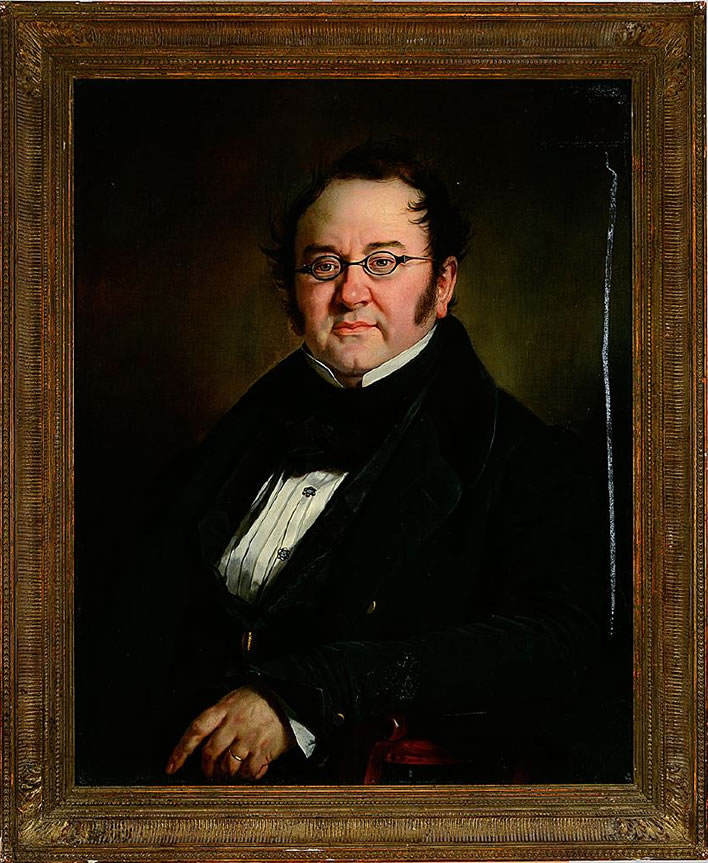
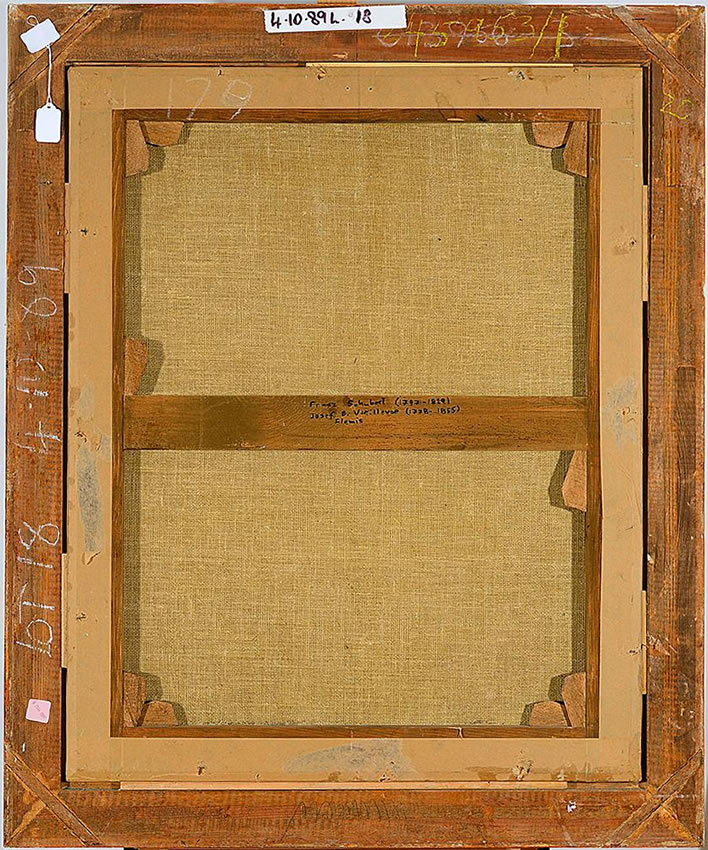
As you will note from the lot numbers and dates scrawled around the back of the frame, the painting has spent recent decades popping up in various auction houses. The latest appearance, where Luca discovered it, was in an auction that took place at Clars Auction Gallery in Oakland, California, on 20 May 2018 (lot 6203).
At this sale the sitter was unequivocally stated to be the composer Franz Schubert: the painting was titled by the auction house 'Portrait of Composer, Franz Schubert'. The fact that the auction house even gets Vieillevoye's year of birth wrong (1798, recte 1788) does not fill us with confidence.
The attribution by Clars is a general flight of fancy: they seem to have overlooked Vieillevoye's signature and date in order to rely on what someone has scribbled in what looks like felt-tip pen on the stretcher bar at the rear, 'artist and sitter inscribed on stretcher bar':

This inscription doesn't fill us with confidence either: not only is Schubert's death year given incorrectly as 1829 (recte 1828), Vieillevoye's birth year is out by ten years (1778, recte 1788), his name is spelt incorrectly and he is considered to be Flemis, that is, belonging to the Flemish/Dutch-speaking tribe in Belgium – quite an insult for a French-speaking Walloon.
If only because of all these inaccuracies we can consider the scribble on the stretcher bar to be without value. Indeed, Michaan's Auctions in Alameda, California, which had sold this painting a year before Clars, on 13 May 2017 (Lot 309), to their credit ignored the inscription on the stretcher completely and titled the painting 'Portrait of a Gentleman'. This title is in line with Vieillevoye's habit of not explicitly naming the sitters in his portraits. Why someone who was trying to earn a living from portraiture should do this is a mystery, but that is how it is.
Who was the sitter?
No idea. But it was certainly not Schubert.
We have already looked at some of the basic issues of provenance that make it almost certain that the sitter is not Franz Schubert, but as we have found to our cost in previous outings on this theme, one whack of the shoe on the cockroach of misattribution is never enough for the faithful – better give it a few more whacks, just in case.
Let us therefore consider the evidence contained in the image itself.
The face
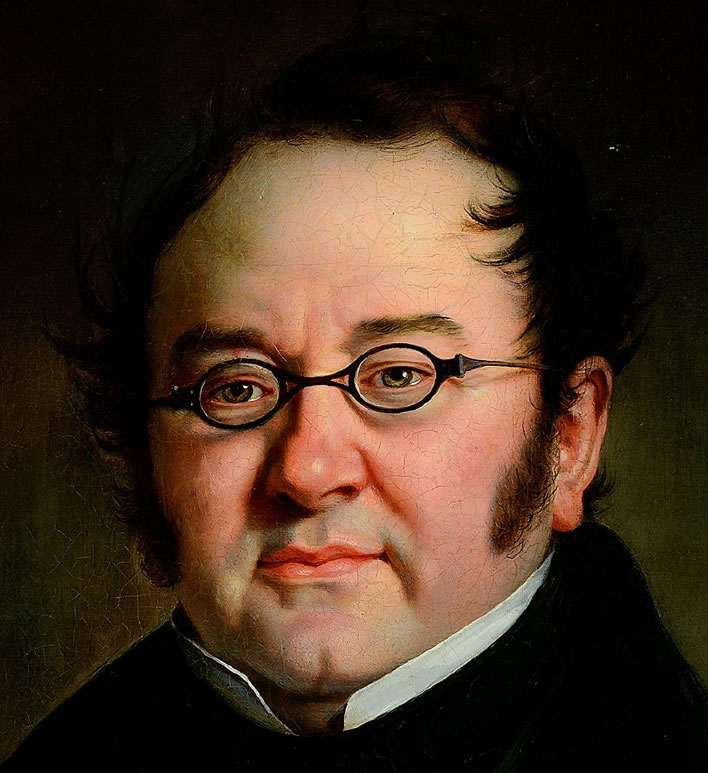
Our reference image for comparison with the face in the painting is the mask made of Schubert's face in later life or possibly post-mortem.
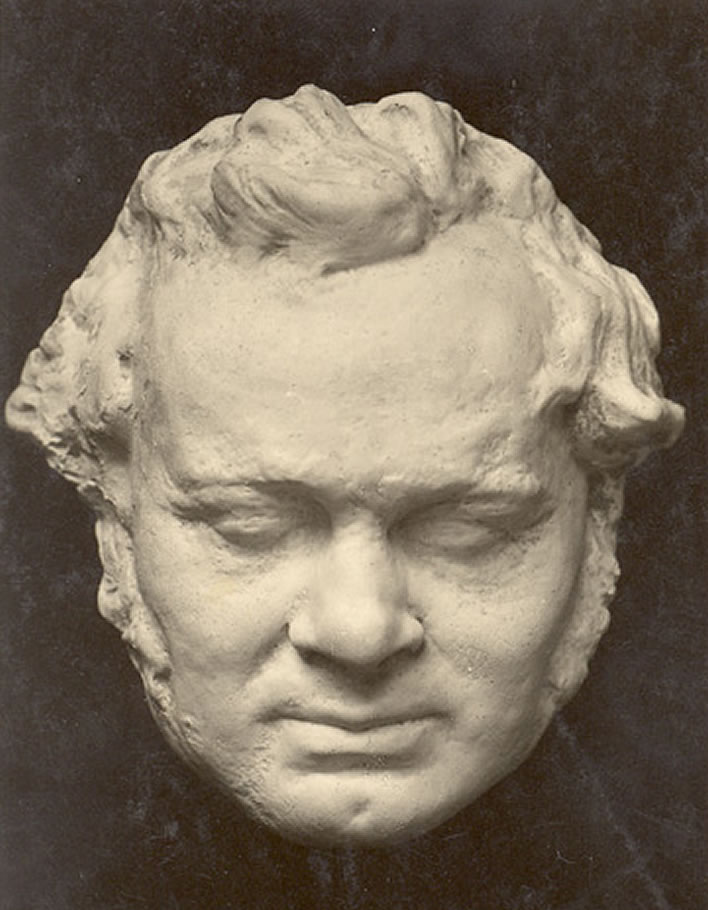
A photograph of the life/death mask of Franz Schubert. It was either cast shortly after his death on 19 November 1828 or at some unknown time during his later life. It is the most accurate representation we have of the appearance of the composer.
A glance at the two images will be enough for most people to conclude that these are representations of two different people. If asked to glance more closely and critically at the images, observers would point to the broader nose and mouth in the mask; Schubert's marked chin dimple is different from the cleft shown in the painting.
All those who described Schubert's appearance in the flesh have remarked on his naturally curly hair. As the lightened image below shows, the hair of the subject in the painting is not curly, but brushed forward over his temples – Schubert fans may recall Johann Mayrhofer's equally windswept hairstyle in Moritz Schwind's two sketches of him.

Dress
If we lighten the full image so that we can see the details of the sitter's clothes better, it becomes clear that we are looking at a man of substance, not just in body but in his finances. This is not the embroidered silken finery of the aristocrat of an earlier period, but the solid, quietly prosperous get up of the man of bourgeois substance. It is, indeed, a 'portrait of a gentleman', as Michaan's Auctions titled it in 2017.

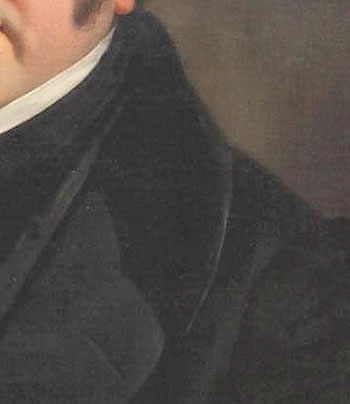
The sitter's frock coat has an expensive velvet, moleskin or fur collar that signals wealth. A coat with such a collar is quite out of Schubert's league.
It may be that the substantial bulk of the coat and the steep shoulder line is intended as a distraction from the substantial bulk of the sitter.
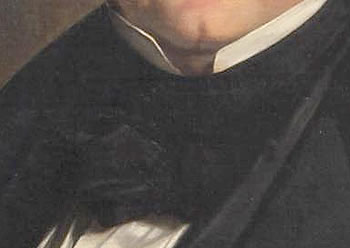
The sitter's cravat is a substantial as he is: undoubtedly silk and massively deep. The unusual depth of the cravat may be another portrait painter's trick to give his subject a longer, more elegant neck.
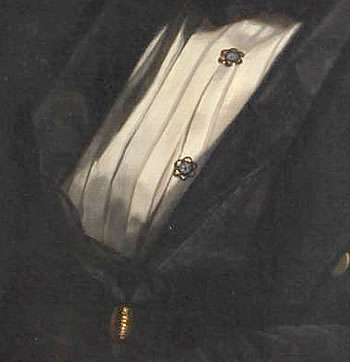
The careful rendering of the shirt and the waistcoat stands out. The shirt is precisely represented: we cannot fail to notice its expensive pleating and fine, decorative buttons. When we stand back from the painting, the shirt and those buttons are nearly the most dominant element in the painting.
The hang of the waistcoat suggests that it is silk. The gold or brass toggle is very noticeable, gleaming in the surrounding darkness.
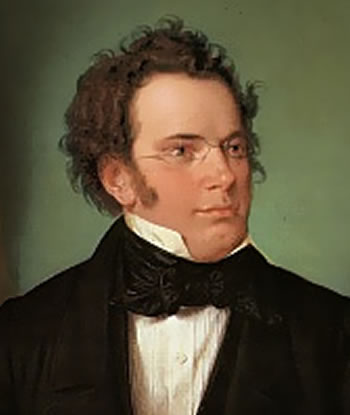
Schubert was never portrayed in an outfit of such bourgeois splendour. At least not during his life.
However, in 1875, forty-seven years after Schubert's death, the portrait painter Wilhelm August Rieder returned to his 1825 watercolour and sepia drawing of Schubert, the poverty-stricken nobody, and remade the portrait.
By then, Schubert was becoming famous, finally worthy of oil paint; he was also worthy of some decent clothes, which Rieder gave him: a pleated shirt with decorative buttons and a very deep silk cravat.

And finally the most telling sign that we are not looking at a portrait of Franz Schubert: the sitter in Vieillevoye's portrait is wearing a wedding ring. The ring is not only visible but conspicuously, unmissably so.
It is the sort of dynastic statement that was quite common in portraits of men. Franz Schubert, of course, was never married and we hear nothing of his wearing any kind of ring, even of the purely decorative sort.
Conclusion
This work by Josef Bartholomeus Vieillevoye is not a portrait of Franz Schubert. Of that there can be no doubt.
We don't expect this misattributed painting to gain the popularity of the other misattributed portraits supposed to be of Schubert: the 'Schubert' portrayed here has an unattractive, bloated piggy face with an equally unattractive expression of immodest self-satisfaction on it. Sensitive music lovers listening to Winterreise will not be gazing dreamily on a CD-box with this on its front:

0 Comments UTC Loaded:
Input rules for comments: No HTML, no images. Comments can be nested to a depth of eight. Surround a long quotation with curly braces: {blockquote}. Well-formed URLs will be rendered as links automatically. Do not click on links unless you are confident that they are safe. You have been warned!